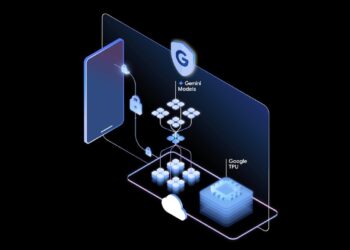Mumbai, September 24, 2018 According to Capgemini new report, businesses are pursuing digital transformation to achieve a step change in their speed, agility, and ability to innovate. Realizing the unique offerings of digital transformation rests on an organization’s ability to access data at greater speed and in greater breadth. A new report released today from Capgemini, reveals how modernized, hybrid cloud integration and microservices-based Application Programming Interfaces (APIs) are the means to empower digital transformation and maximize capabilities to benefit from the API economy.
The global survey of 818 senior IT executives working in large organizations with revenues of over €500m, suggests that a mature API-driven hybrid integration strategy is a contributing factor to business growth. According to the report, 49% of Integrators reported revenue growth of five percent or more over the past three years, compared with just 23% of Deliberators. Furthermore, 41% of Integrators reduced the time needed to upgrade existing products by 50% or more (compared to 33% of Deliberators), and nearly half of the Integrator group (46%) aims to engage in the API economy to create new revenue streams (vs. 25% of Deliberators).
With the strong architectural foundation provided by cloud-based integration tools, APIs can do more than just act as instruments to unlock data. The findings reveal that Integrators are far more bullish about their ability to innovate, with 68% saying they are able to develop new products rapidly and bring them to market quickly (vs. 25% of Deliberators) with greater scalability, reliability and customization. Additionally, APIs can help improve the customer experience.
Capgemini client T-Mobile, an American telecom operator runs over 300 APIs in the US. T-Mobile, a business with a long heritage in the US, has shaped a successful transformation journey by implementing microservices.
Chuck Knostman, Vice President for Strategy and Technology at T-Mobile says, “C-level executives now ask us all the time: ‘Do we have APIs for this?’ When that conversation is happening at that level, it’s a true sign of transformation to me.”
Complexity of hybrid IT estates remains the biggest barrier to hybrid integration
A hybrid cloud integration approach involves the use of modern, cloud-based integration tools in combination with those on-premise, such as the enterprise service bus (ESB)[4], to connect applications in different environments. The report found that 66% of surveyed firms use three or more cloud providers, with over three-quarters of their applications running in a private cloud or on-premise (or both). The traditional point-to-point integration approach used within monolithic systems will not be able to cope when hundreds of a company’s applications reside in several different environments.
Hybrid cloud integration is a means of managing this complexity and ensuring that the firm’s technology infrastructure can deliver on business objectives. However, there is a consensus among the respondents interviewed to be cautious of the “piecemeal” approach to integration, and they agreed that companies should not attempt to rip and replace their legacy integration architecture in one fell swoop. On the other hand, the report concludes that it is necessary to take the appropriate steps at the right time, and combat the inertia in order to seize the hybrid integration opportunity effectively.
Building the right capabilities for hybrid cloud integration
The first step to modernizing an organization’s integration capabilities is to identify the requirements based on its business goals and technology roadmap. Six in ten survey respondents say their organization has identified the existing and future integration requirements needed to support their business ambitions. The next step is developing a strategy aligned to the organization’s sights set on ultimately phasing out older integration tools and replacing them with cloud-based ones. Making the right choices based on selection criteria that support business objectives can ensure optimized TCO and greater ROI.
“In companies with multiple units and sites that have done things in different ways using different technologies, standardizing the integrations across the organization is imperative, but it requires a big planning effort even before you start making any changes,” said Charlie Li, Head of Cloud Services, North America, Capgemini. “APIs are controlled, they’re standardized and they’re secure. This allows companies to collaborate in a much bigger way than they have before.”
To view more details: click here.
Hybrid Cloud Integration is the Key to Unlocking the Business Value of Digital Transformation: Capgemini Report, To Download PDF Report Copy: click here
Research Methodology
The analysis in this report is based on an online survey of 818 IT executives conducted between March and May 2018. Two-thirds of the respondents (66%) are IT directors and one-fifth (20%) are senior IT architects. C-level technology executives (including CIOs and CTOs) constitute the remainder. They work in one of ten sectors, with the majority (63%) distributed roughly evenly between banking, consumer products, and retail, manufacturing, utilities, high-tech, and telco and communications. The survey respondents are based in 16 countries in Europe (40% of the sample), North America (40%), and Asia-Pacific (20%). All the companies represented have turnover exceeding €500m, with 80% having turnover of €2bn or more.
Related News: Capgemini with AWS to Accelerate Enterprise Digital Transformation























